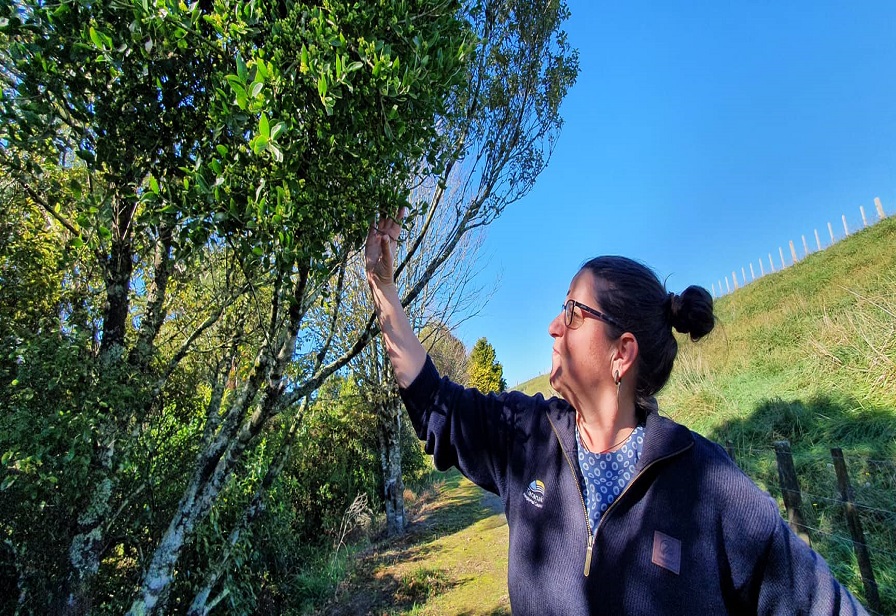It’s known as an ice-cream species because it’s delicious to possums. Unfortunately that’s a big reason why our native mistletoe populations have dwindled across much of the country, including in Taranaki.

There are nine endemic mistletoe species in New Zealand, and while they’re not the kind you kiss under at Christmas, they are a relative! Some species produce scarlet or yellow displays of flowers while others produce hordes of orange or pink berries, making them a stunning species to encounter at certain times of year.
Green mistletoe is the only species found naturally in Taranaki, and it’s considered a significant species due to its rarity and biodiversity values. There are a few spots in Taranaki where it’s thriving, usually in areas where there is effective predator control.
Mistletoe only grows on a host tree species from which it takes some water and nutrients, making it a parasitic plant. It therefore can get a bad rap from people mistakenly thinking it harms the trees it grows on, but doing so is not in its best interests.
Because of its quirk of growing on other plants, mistletoe have had to evolve an equally quirky way of getting their seeds onto suitable tree species. All those yummy berries are brightly coloured to attract hungry native birds, which eat then ‘deposit’ them onto another suitable host within the forest. Seeds within the berries are very sticky, helping them anchor on to any suitable branch.
Over the last year or so myself and other mistletoe lovers at the Council have tried to help replenish biodiversity by planting mistletoe seeds on trees around the region. So far it’s proving challenging, unsurprisingly we are no match for the birds!
It’s a good reminder that predator control is not only useful for directly protecting plants, but also the birds their distribution relies on.
Is mistletoe thriving at your place? We’d love to see it – pop over to the Towards Predator-Free Taranaki(external link) Facebook page and share some photos.